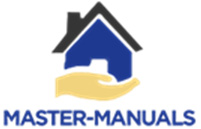
O&M Manuals
Operation and Maintenance (O&M) Manuals
Operation and Maintenance (O&M) Manuals are essential documents within the realm of technical literature. They play a critical role in
providing comprehensive guidance for understanding the intricacies of operating and maintaining diverse systems, equipment, or structures.
These manuals serve as invaluable resources, offering detailed insights into the procedures, guidelines, and best practices necessary for the effective and secure management of the aforementioned entities.
O&M Manuals are instrumental in bridging the gap between the design and implementation phases of a project. Encompassing a wide array of information, they cover operational procedures, troubleshooting protocols, safety measures, routine maintenance directions, and technical specifications. These manuals cater to a diverse audience, including technicians, engineers, end-users, and facility managers.
The significance of O&M Manuals extends well beyond initial system operation.
They serve as valuable references throughout the entire lifespan of the equipment or system, aiding in regular maintenance, minimizing downtime, and extending overall longevity. Furthermore, O&M Manuals contribute to risk reduction by ensuring that personnel are well-versed in safety procedures and potential hazards.
In essence, Operation and Maintenance Manuals serve as indispensable repositories of knowledge, facilitating the seamless functioning and prolonged lifespan of intricate systems. Their role in enhancing operational efficiency, safety protocols, and informed decision-making underscores their importance across various industries and sectors.
Why Do We Issue O&M Manuals?
Effective Operation
Proper Maintenance
Troubleshooting and Issue Resolution
Safety and Risk Mitigation
Safety is a critical component of the O&M Manual, which outlines potential hazards, safety protocols, and risk mitigation strategies. By clearly communicating safety instructions, the manual ensures that building operators and maintenance personnel are aware of risks and equipped to handle them appropriately. This proactive approach helps prevent accidents, injuries, and hazardous situations, fostering a safe environment for occupants and staff.
Consistency in Operations and Maintenance
The manual serves as a standardized reference for all personnel involved in the Project’s operation and maintenance. By establishing consistent procedures and practices, it ensures consistency in how systems are managed, regardless of changes in staff or operational teams. This consistency is essential for maintaining operational efficiency and preserving the integrity of the Project’s infrastructure.
Transitional Knowledge Transfer
Upon project completion, the O&M Manual facilitates the seamless transfer of knowledge from the project team to the facility management team. This ensures that the Property operators have a thorough understanding of the installed systems and equipment, enabling them to operate and maintain the property effectively from day one. Knowledge transfer is a critical step in ensuring the long-term success of the facility’s operations.
Regulatory Compliance
In many jurisdictions, the provision of an O&M Manual is a legal or regulatory requirement. The manual ensures that the Project adheres to applicable codes, standards, and regulations, thereby avoiding potential legal or financial penalties. It also serves as documented evidence of compliance, which may be required during inspections or audits.
Warranty Management and Support
The O&M Manual includes detailed warranty information for the systems and equipment’s installed on the project, ensuring that operators understand the terms and conditions of warranties. This knowledge is essential for making timely warranty claims and accessing manufacturer support, thereby protecting the property investment and minimizing unnecessary expenses.
Emergency Preparedness
The manual provides clear emergency procedures and contingency plans to guide engineers and operators during critical situations. By outlining appropriate responses to emergencies, such as system failures or safety incidents, the manual helps minimize risks to occupants, property, and operations, ensuring a swift and effective resolution.
Operational Efficiency and Cost Savings
Properly operated and maintained systems are inherently more energy-efficient and reliable, leading to significant cost savings over the Project’s lifecycle. The O&M Manual equips operators with the knowledge and tools needed to optimize system performance, reduce energy consumption, and lower operational expenses, contributing to the financial sustainability.
Historical Documentation and Future Reference
The O&M Manual serves as a comprehensive historical record of the systems, equipment, and operational practices. This documentation is vital for future reference, particularly during renovations, upgrades, or modifications to the building’s infrastructure. It provides a clear understanding of the original design intent and operational requirements, ensuring that any changes align with the facility’s long-term goals.
When are the Manuals Developed and Issued?
Stage 1 | Design and Pre-Construction:
During the preliminary stages of the project, the format and building systems/equipment should be developed that will require O&M manuals to establish the documentation requirements,
Ensure that the manual requirements are specified within all tender documentation.
Stage 2 | Early/Mid Construction:
Oversee, manage, and coordinate the writing of the operating and maintenance manuals for draft submission, Submit ‘draft’ manual for initial owner/building operator review in line with agreed formats, Update manuals in line with comments received.
Stage 3 | Late Construction/Commissioning:
- Ensure all testing and commissioning data is included within the manuals that has been created.
- Insert all relevant training information and data that has been completed
- Issue the manual to the owner’s team for review
- Incorporate any changes or feedback from the review process.
Stage 4 | Project Closeout/Handover:
- Issue the ‘final manual’ to the owner
- Owner and other stakeholder ‘approve’ the final O&M manuals
- Owner issues manuals to the building operator Handover: The O&M manuals are officially handed over to the building owner or operator, marking the completion of this Project.
Stage 5 | Post-Construction and Operational Phase:
Building operators and maintenance personnel use the O&M manuals to operate, maintain, troubleshoot, and manage the building’s systems and equipment.
As the building systems are modified, upgraded, or replaced over time, the O&M manuals should be updated by the building operator detailing any changes. rewrite in a more professional and more accurate ways.

